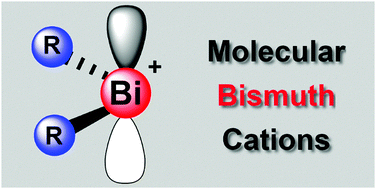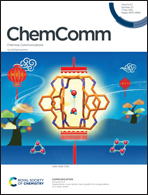Molecular bismuth(iii) monocations: structure, bonding, reactivity, and catalysis
Abstract
Cationic bismuth(III) species [BiR2]+ with weakly coordinating counteranions feature two monoanionic ligands R (such as aryls, amides, alcoholates or halides), a vacant bismuth-centred p-orbital, and an occupied bismuth-centred s-orbital. The vacant orbital is available for intra- and intermolecular σ- and π-type bonding interactions and plays a crucial role in redox chemistry. The occupied s-orbital may also show minor contributions to dative bonding and is essential when addressing reversible Bi(III)/Bi(V) redox shuttling. Variation of the anionic ligands R, the weakly coordinating counter anions, and potential neutral ligands L allows precise fine-tuning of the coordination chemistry, Lewis acidity, redox-properties, and reactivity towards nucleophiles. This contribution summarises the fundamental properties of well-defined molecular cationic bismuth compounds and highlights recent advancements in the understanding of their Lewis acidity, in their utilisation for challenging stoichometric reactions (such as CH activation and small molecule activation), and in catalytic applications (such as Lewis acid catalysis, radical polymerisation, and Bi(III)/Bi(V) redox catalysis).



 Please wait while we load your content...
Please wait while we load your content...